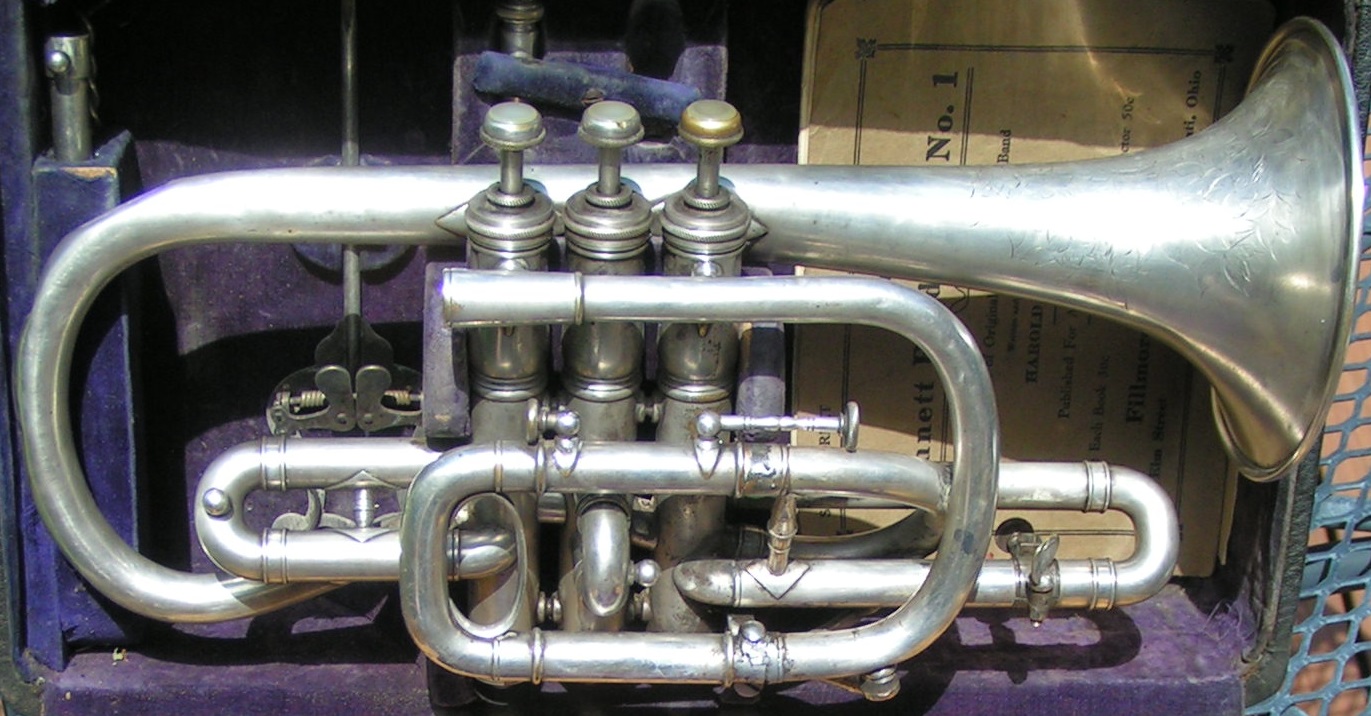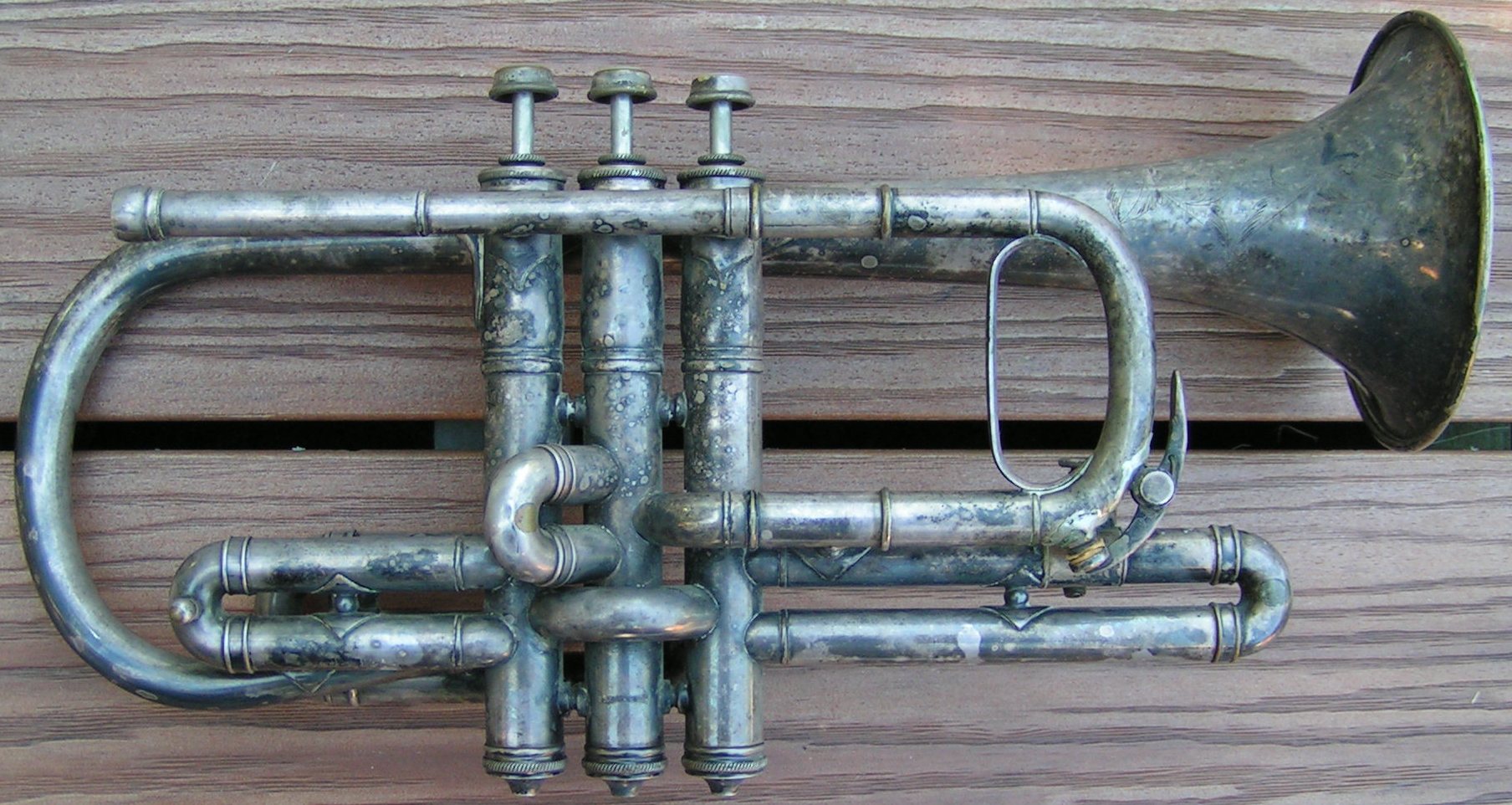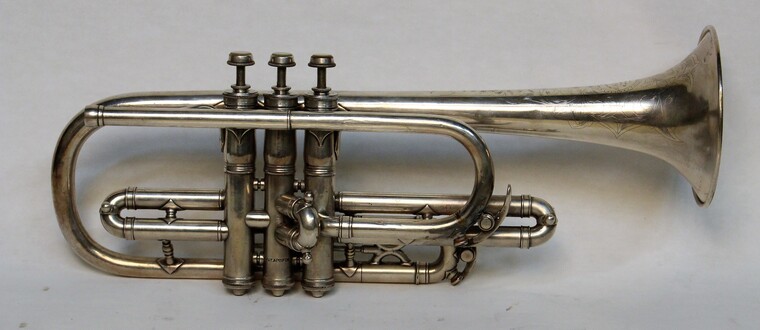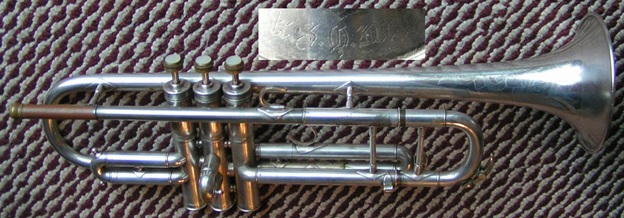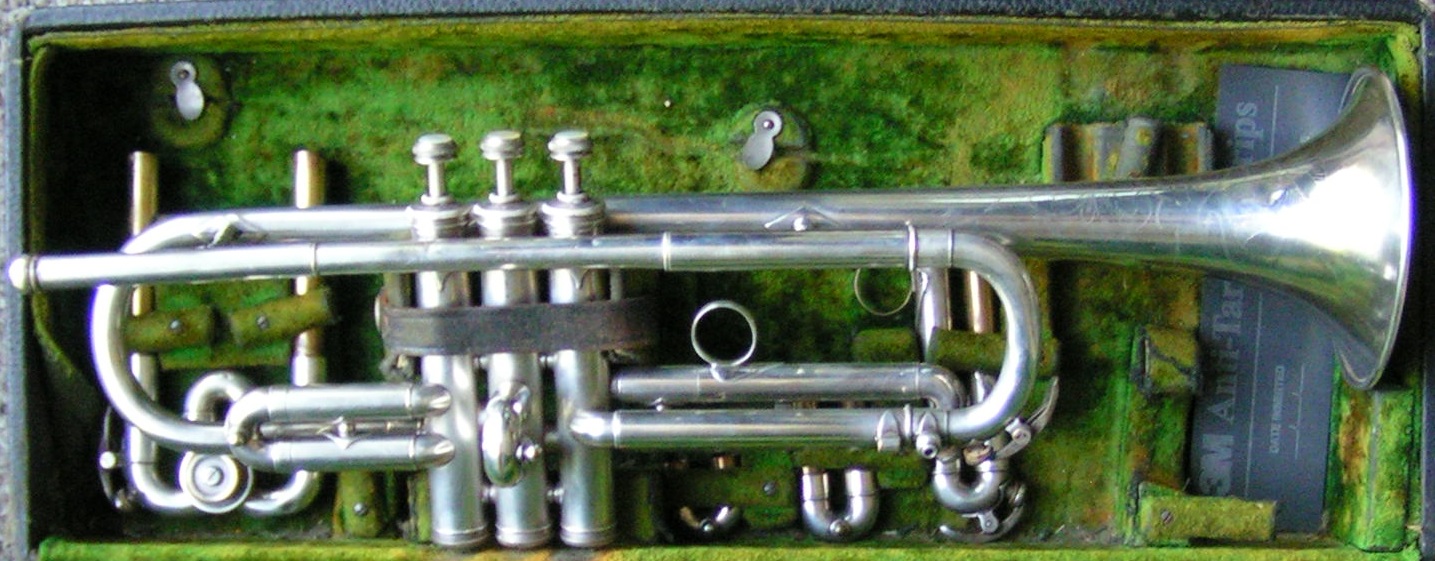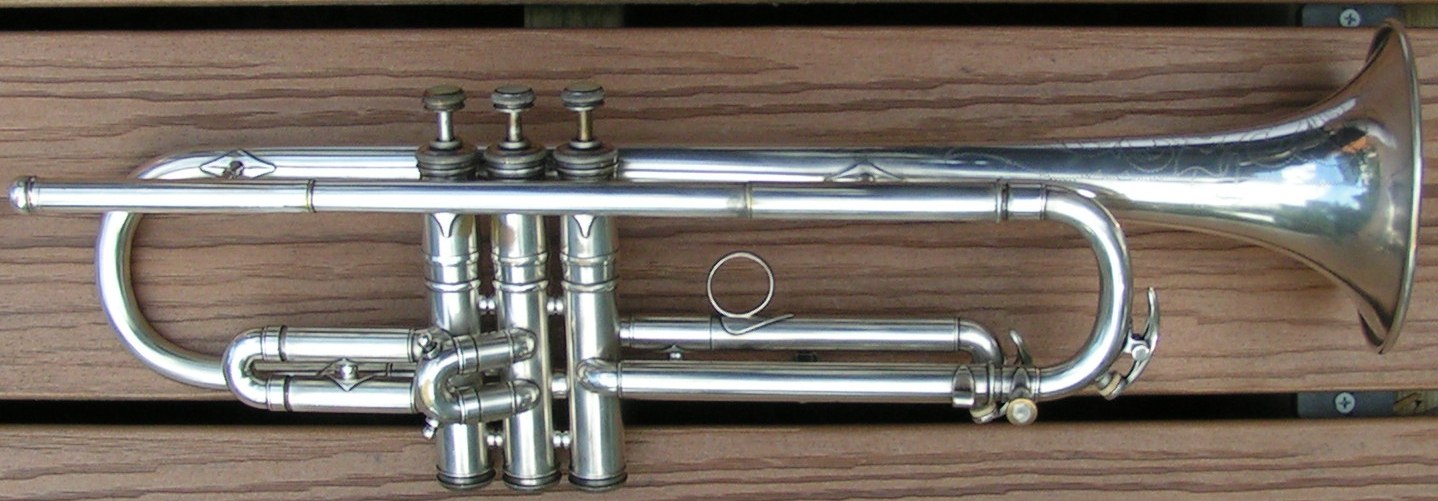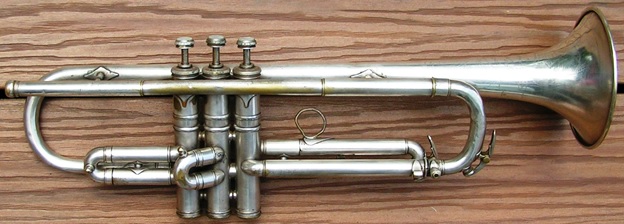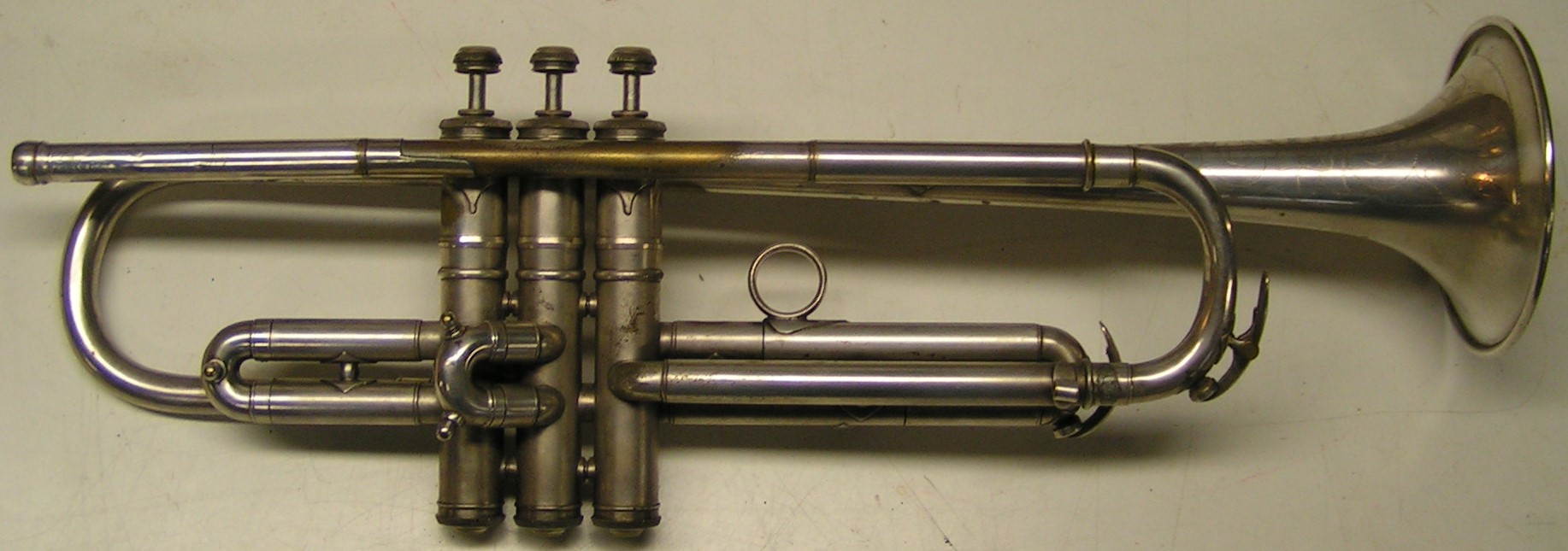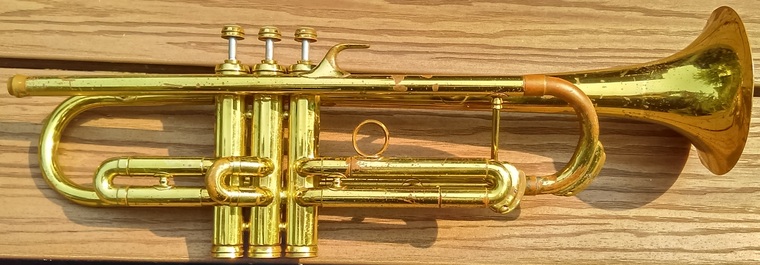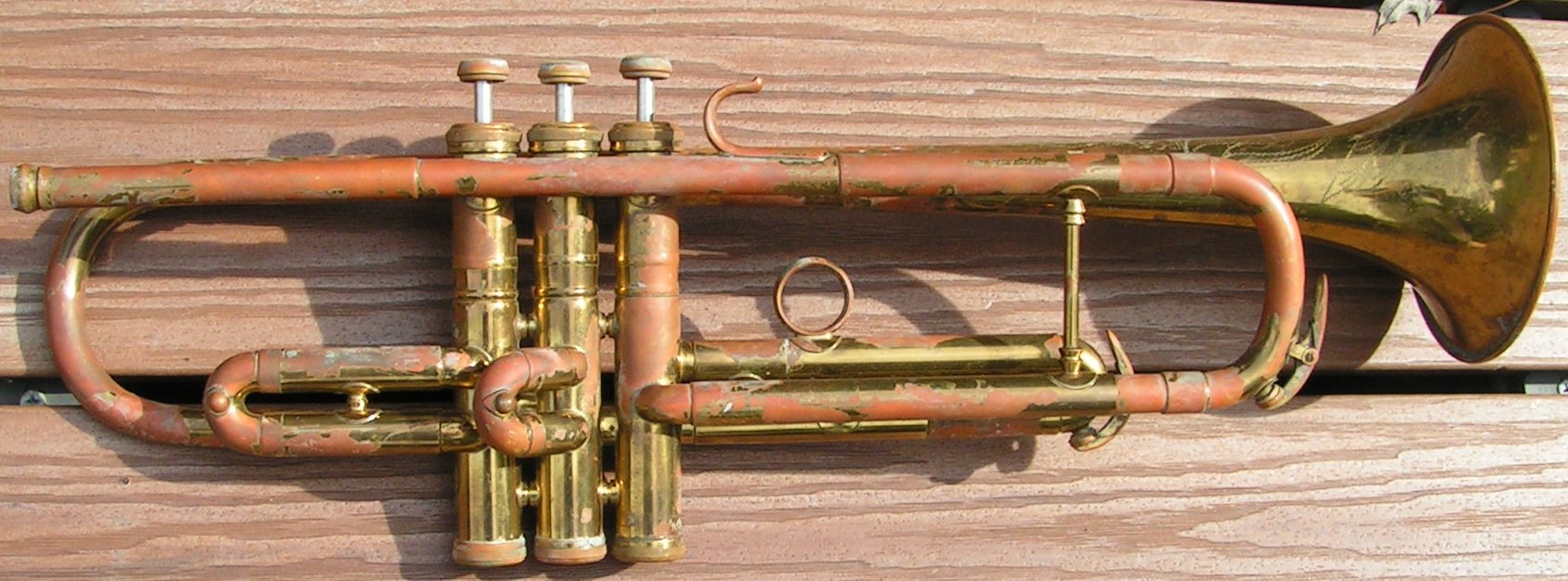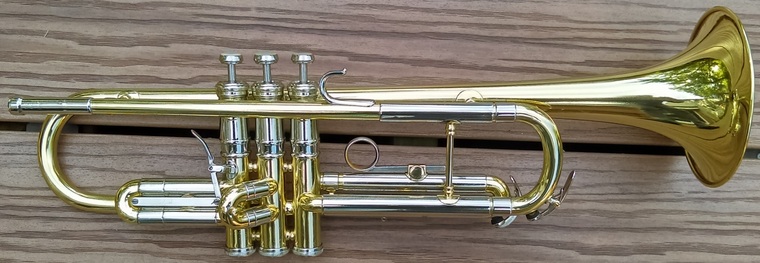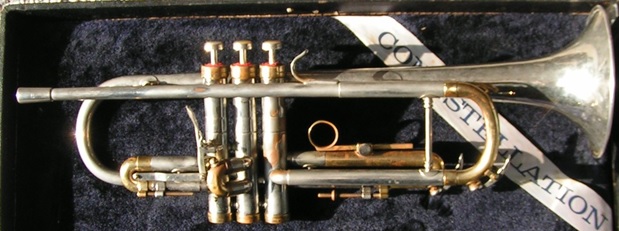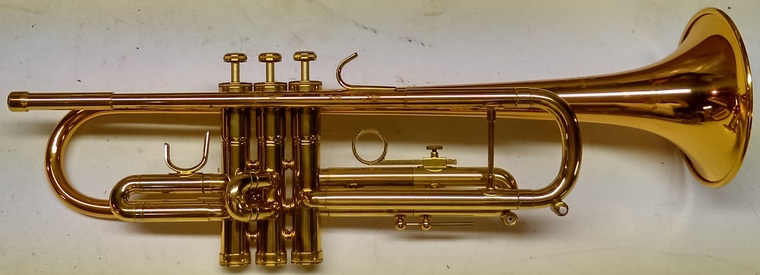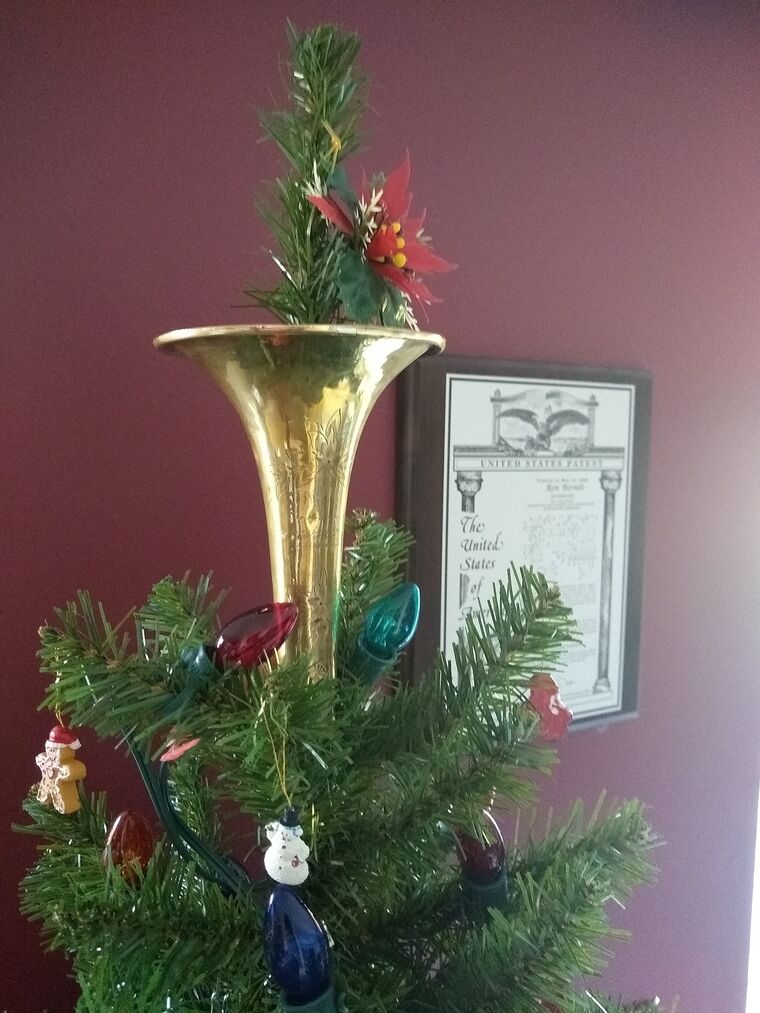OK, here's one of those content threads we have been talking about. Here are 4 company timelines. Expand, correct, add more companies. Let's add some core content.
Besson
1838: AG Besson builds his first Perinet valve cornet in France
1858: AG Besson loses a lawsuit and relocates to England. His wife restarts the firm, continuing the same serial numbers
1867: (or before) The French firm introduces a new concept of a pitch change slide at the last bend of the lead pipe
1880: (or possibly very shortly before) The French firm introduces the first modern wrap valve trumpet, pretty much what people call a Brevete model (though that is not a model name)
1890: The French firm changes names to Fontaine-Besson as a result of a marriage in the family
1894: The English firm is sold out of the Besson family
1914: Austrian deserter Vincent Bach lands a job as assistant principle trumpet in Boston using a Besson cornet. He is promptly provided Gustav Heim’s spare 1914 LP New Holton Trumpet demonstrator.
1930: Elden Benge begins building modified Bessons and then his own horns in the same style, he continues evolving this school of design with the help of Schilke, Autrey and Busch through the end of his life.
1931: Francois Millereau, a former Besson employee, sells his trumpet making business to Henri Selmer.
1932: Fontaine-Besson is acquired by Strasser Margaux & Lemaire
1948: Besson (the English firm) is acquired by Boosey & Hawkes
1957: An insolvent SML sells Fontaine-Besson to Couesnon
1969: An arson fire reduces the Couesnon plant to a pile of broken block and twisted steel. All Besson records and tooling there are lost. (This is the end of direct production of F.Besson horns)
1980: Donald Benge teams with Zig Kanstul and Byron Autrey to develop Benge style (French Besson style) trumpets for stencil under the Burbank name and also after 1981, the Kanstul name.
1981: Buffet is acquired by Boosey & Hawkes
1986: Boosey & Hawkes is acquired by Carl Fischer
2001: Carl Fischer’s extensive conglomerate of instrument makers shut down names including B&H. Besson continues.
2003: The Music Group, a venture capital entity, restructures the Carl Fischer companies. Besson designs and tooling were deliberately destroyed and the name moved to a new line of instruments built in India and other locations.
2006: The Music Group becomes insolvent. The Meinl family and Triumph Adler, which already owned B^S and other post-collective East block firms, acquires most of the brands including Buffet and Besson. The resultant Buffet-Crampon company controlled those plus Courtois and York. Besson production returned to Europe at Markneukirchen shortly thereafter.
2019: The tooling and records of the Kanstul company convey the Benge/F.Besson Legacy to BAC Musical Instruments. Autrey’s personal Benge and Kanstul horns, design notes, tools, etc. also transfer from his estate to BAC.
2020: BAC acquires the Benge trademark and begins building the culmination of the work of Besson, Benge, Schilke, Autrey and Kanstul with regard to classic Besson design. Modern Besson designs by Buffet continue, but with no design linkage to any prior Besson instruments
Distin-Keefer
1849: Henry Distin started making instruments in England while still part of his family ensemble that toured performing on Saxhorns.
1868: Distin workshop sold to music publisher Boosey & Co. which continued the serial numbers at the same address.
1876: After a couple years of blowing all his money on failed concert promotions and making a living playing and tending bar, Distin moved to the US to superintend at the "monster" Martin Pollman & Co. works in NYC. (This allowed partner JH Martin 2 years to go work at CG Conn and learn about modern instruments)
1878: Distin started making the same designs he had made in England in partnership with FW Busch in New York.
1880: Distin partnered with former Martin & Co. joint venture partner Moses Slater in New York.
1882: Distin moved to Pennsylvania and started Distin & Pincus, a publisher. Slater continued building the same horns under his own name without Distin.
1884: Henry Distin Manufacturing established in Philadelphia to make horns for JW Pepper.
1889: Distin Manufacturing moved to Williamsport
1890: Distin Manufacturing sold to shop superintendent, Brua C. Keefer.
1909: Name changed to Brua C. Keefer Company.
1960: A grass fire alongside the plant spread to the building. The company never reopened.
Frank Holton & Co.
1885: Sousa Band trombonist Frank Holton partnered with JW York, a former apprentice to Louis Hartman and Henry Esbach in the Keat/Graves/Wright tradition at Boston.
1887: York and Holton ceases operations, though was not closed out for many years.
1896: Holton starts a mail-order business selling his “Electric Oil” slide oil for trombones. It does not make money in its first 3 years
1898: Holton opens a small Chicago walk-up store selling instrumental supplies and used band instruments. A few cornets were assembled at the repair bench from a mix of purchased and fabricated parts.
1904: Holton relocated to an entire floor of 107 W. Madison in Chicago for more manufacturing space.
1906: The first half of the Holton factory on Gladys street was constructed. Virtuoso Earnst Couturier joins the firm as a promoter, road man, and possibly designer.
1911: The second half and adjacent shipping/receiving building opened. The New Holton Trumpet debuts as the first serious American orchestral trumpet.
1913: Couturier leaves Holton for a brief partnership with JW York to build the Wizard cornet.
1914: Gustav Heim handed his new assistant at Boston a 1914 New Holton Trumpet demonstrator, as the Austrian deserter had no trumpet of his own. This encouraged Vincent Bach to become a Holton artist.
1916: Couturier buys the William Seidel Band Instrument Company, renames it for himself, and starts building a line of pure conical bore instruments – even trombones. He moves it To LaPorte in 1918
1918: Over a weekend in October, all tooling was relocated to a new facility in Elkhorn Wisconsin, provided free of charge when the firm met a local payroll target – actually ahead of the deadline
1918-19: Holton built a neighborhood of houses to recruit key employees. His home anchored the end of the street, the other end of which ended at the door of the municipal building downtown.
1921: The Holton Revelation Trumpet, in production since December of 1919, was announced formally.
1923: Couturier loses his eyesight, and shortly thereafter his company to Lyon & Healy.
1924: 14 year old “child prodigy” Renold Schilke begins performing with the Holton-Elkhorn band, and apprenticing in brassmaking and gunsmithing at the factory.
1927: Schilke, his teacher Edward Llewellyn, and the Holton design team develop the Llewellyn model variant of the Holton Revelation. Elements of this design would influence the Martin Committee.
1928: Holton buys the defunct former Couturier shop for Lyon & Healy and establishes the Collegiate brand.
1929: The same team develops the first light-weight, very large bore, minimally braced, reversed construction trumpet with Kansas trumpeter and professor, Don Berry.
1932: After an unsuccessful rebranding as “Ideal”, Holton closes the LaPorte facility and moves production of Collegiate instruments to the Elkhorn plant.
1938: Frank Holton sells the company to long time employee Frank Kull.
1944: Frank Kull dies and is succeeded by his son Grover.
1957: Holton begins buying parts and complete built-to-spec horns from Courtois. French valves become commonplace on Holton horns – though not all models.
1965: Leblanc completes a 3-year acquisition of Holton – and promptly goes through 2 new model numbering schemes.
1971: Holton, as part of a wide range of artist-linked models, begins a line of 10 trumpets designed at an intermediate level for young fans of Maynard Fergusson. They become best-sellers.
1981: The Martin design team, by then another arm of Leblanc and charged with all R&D, copies an Elkhart Bach 37, selected at a local store, creating the specifications for the Holton T-101s
2004: Steinway Musical Instruments’ Conn-Selmer division acquires Leblanc
2007: Conn-Selmer halts production at Elkhorn, moving Holton French horns to Eastlake Ohio and merging the Holton brand with King and others on Eastlake low brass.
Vincent Bach Corporation
1914: While touring in Britain, cornet artist and Austrian Navy veteran Vincent Schrottenbach learns of the onset of World War One. A soldier behind enemy lines, he quickly books passage on a ship to the US under the name Vincent Bach to elude capture. There he performs with the Boston Symphony for a season, tours the West Coast in 1915, and settles in playing with the Met. He is drafted and becomes a bugle instructor for the US Army in 1918.
1918: Bach sets up a small mouthpiece making shop in the back of the New York Selmer store – probably the smartest move George Bundy made on behalf of his then employer.
1922: Bach incorporates.
1924: Bach begins experimenting in trumpet making, drawing on both the commonplace Besson of the time, and his Holtons.
1925: Bach makes his 45th horn for his new wife’s father, bandmaster Adam Staab (it was his second marriage)
1928: Bach moves out of a small storefront shop and into an actual factory building in the Bronx around serial number 1000.
1953: With an additional 10,000 serial numbers consumed, Bach relocates to a factory in Mt. Vernon New York.
1962: Bach sells the company to his one-time patron, the Selmer company, despite higher offers, and designs both a revised Stradivarius trumpet (the 180) and a new Bundy trumpet for them.
1963: In November, construction of 180s begins at Mt. Vernon while the former Buescher plant on Main Street in Elkhart is readied to relocate Bach to, as the rent charged by the Bach family on Mt. Vernon was considerable.
1965: Selmer moves Bach operations to Main Street in Elkhart.
1974: Selmer moves Bach operations, over time, to the facility on Industrial Drive in Elkhart. Two-piece casings and steel rim wires in 180s phase out over the next few years ending the “Early Elkhart” period.
2004: Steinway Musical Properties acquires Selmer, and with it Bach.
2010: The Bach “Artisan” 190 series trumpets are introduced, featuring a French bead and Early-Elkhart elements such as two piece casings. The non-Artisan “regular” 190s additionally feature steel rim wires.
